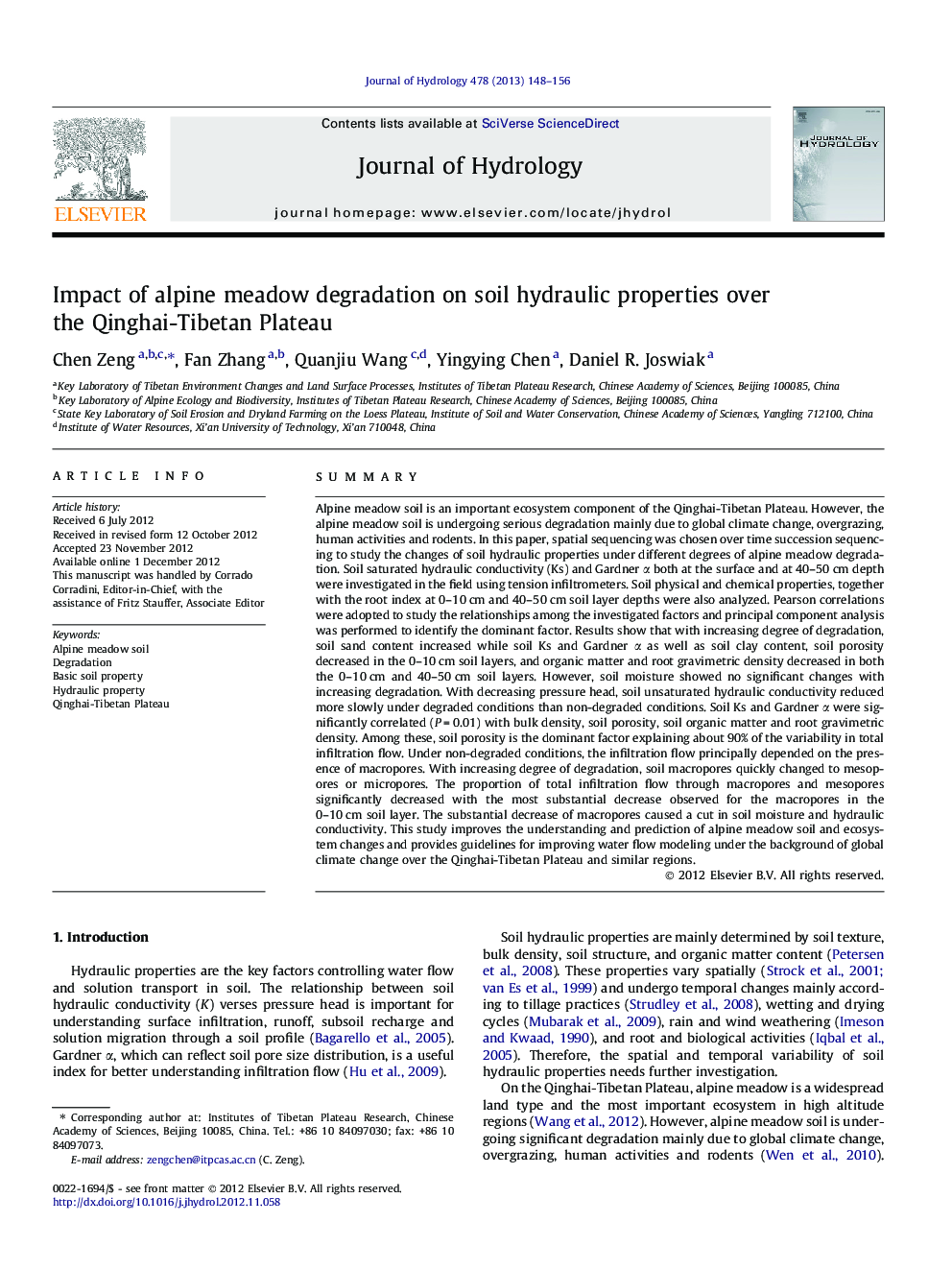| کد مقاله | کد نشریه | سال انتشار | مقاله انگلیسی | نسخه تمام متن |
|---|---|---|---|---|
| 4576537 | 1629970 | 2013 | 9 صفحه PDF | دانلود رایگان |

SummaryAlpine meadow soil is an important ecosystem component of the Qinghai-Tibetan Plateau. However, the alpine meadow soil is undergoing serious degradation mainly due to global climate change, overgrazing, human activities and rodents. In this paper, spatial sequencing was chosen over time succession sequencing to study the changes of soil hydraulic properties under different degrees of alpine meadow degradation. Soil saturated hydraulic conductivity (Ks) and Gardner α both at the surface and at 40–50 cm depth were investigated in the field using tension infiltrometers. Soil physical and chemical properties, together with the root index at 0–10 cm and 40–50 cm soil layer depths were also analyzed. Pearson correlations were adopted to study the relationships among the investigated factors and principal component analysis was performed to identify the dominant factor. Results show that with increasing degree of degradation, soil sand content increased while soil Ks and Gardner α as well as soil clay content, soil porosity decreased in the 0–10 cm soil layers, and organic matter and root gravimetric density decreased in both the 0–10 cm and 40–50 cm soil layers. However, soil moisture showed no significant changes with increasing degradation. With decreasing pressure head, soil unsaturated hydraulic conductivity reduced more slowly under degraded conditions than non-degraded conditions. Soil Ks and Gardner α were significantly correlated (P = 0.01) with bulk density, soil porosity, soil organic matter and root gravimetric density. Among these, soil porosity is the dominant factor explaining about 90% of the variability in total infiltration flow. Under non-degraded conditions, the infiltration flow principally depended on the presence of macropores. With increasing degree of degradation, soil macropores quickly changed to mesopores or micropores. The proportion of total infiltration flow through macropores and mesopores significantly decreased with the most substantial decrease observed for the macropores in the 0–10 cm soil layer. The substantial decrease of macropores caused a cut in soil moisture and hydraulic conductivity. This study improves the understanding and prediction of alpine meadow soil and ecosystem changes and provides guidelines for improving water flow modeling under the background of global climate change over the Qinghai-Tibetan Plateau and similar regions.
► We study changes of soil properties with increasing alpine meadow degradation.
► We examine saturated hydraulic conductivity, Gardner α and basic soil properties.
► Ks and Gardner α decreased with increasing degradation in 0–10 and 40–50 cm depths.
► Soil porosity is the dominant factor explaining the variability in infiltration flow.
► Soil macropores changed to mesopores or micropores with increasing degradation.
Journal: Journal of Hydrology - Volume 478, 25 January 2013, Pages 148–156